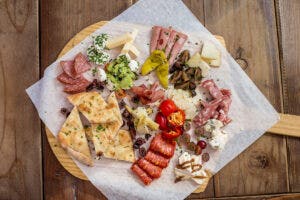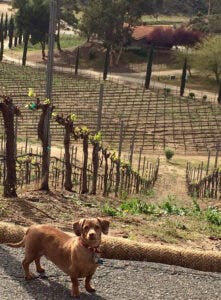When I tell winemakers from the Central Coast that I also taste wines from further south, including the Temecula Valley—a region of rolling hills in southern Riverside County where grapes have been grown since the 1960s—they almost always say, “Oh, I’m sorry.”
You can’t blame the apologetic winemakers, since I usually offer that information in a slightly negative tone. It’s like even I’ve been trained to dismiss places south, so I’m as much to blame. But their reactions made me wonder why the wine industry is inclined to denigrate emerging regions like Temecula or, for that matter, places like Michigan, Texas and Virginia, usually without ever even having tasted the wines they’re bashing. Certainly, Napa once did this to Paso Robles, and Sonoma to Santa Barbara and so on and so forth.
Having been in my current job for more than two years now, I’ve tasted plenty of Temecula wines. Like all of the places I review, not every wine is great, but I’ve been happily surprised by many, from crisp whites like Palumbo Family’s Grenache Blanc to hearty but balanced reds like those produced by Leoness, Lorenzi, and Gershon Bachus. It’s clear that a number of wineries there are doubling down on quality, focusing intently on their vineyards and producing standout bottlings that could hold their own against California’s more established regions.
A few weeks ago, on a rainy Monday morning after the World of Pinot Noir event in Santa Barbara—where I encountered plenty of such sorrys—I made my first trip to the region and visited a half a dozen wineries whose bottles had impressed me. The trip was eye-opening on a number of fronts, as I learned about the region’s climate (cooled by ocean air that blows through the Rainbow Gap each day) and its history, in which 20-acre ranchettes became home to hobby winemakers before Callaway Winery started dominating the scene in the mid-1970s.

Growth was steady to more than 35 wineries today, but Temecula’s trajectory took a hit in the late 1990s when Pierce’s disease decimated their vineyards. That came with a silver lining, though: since 2000, vintners who care have focused on replanting vineyards with varietals and clones that do well in the region’s rather hot summers and low rainfall. In addition to common Rhône and Bordeaux varietals, some, like Robert Renzoni Winery are finding tasty success with Sangiovese, Montepulciano, and Italian grape blends, which makes sense since the hilly terrain looks much like Tuscany. (Renzoni also serves an excellent lunch, as does Falkner Winery; in fact, food service is quite common, unlike many other regions around the state where it is regulated against.)
But I’d be lying if I didn’t admit that there is a bit of truth to the “I’m sorry” stereotypes. Being less than 90 minutes away from the 23 million people who live in that part Southern California, the wineries have always sold out of most everything they make, so there’s never been a real financial impetus for upping quality. That has left many to simply focus on quantity and the status quo. It also means that many of these wines aren’t distributed, so unless you visit, you won’t be tasting them anywhere.

As well, many of the wineries—some of which are a bit gaudy by the Central Coast’s more modest standards—have succeeded in becoming a top destination for wine country weddings and, yes, those notorious bachelorette parties. With SoCal crowds jamming into the tasting rooms every weekend and sipping on quite popular almond-flavor sparkling wine, most of the winemakers I visited openly admitted that serious wine drinkers should only come midweek.
One of those honest vintners was Phil Baily. His was the only winery I visited that I hadn’t tasted beforehand but was highly recommended, and it was quickly apparent why. A vintner in Temecula since 1986, Baily shared a vertical flight of his Cabernet Sauvignon-based Meritage blend stretching from 2005–2011. I’ve experienced many verticals, but the consistency of Baily’s wines was stunning.
“There’s not one that stands out, and that makes me proud,” said Baily, who is also honest that Temecula’s wines have come a long way, whether or not the rest of the California wine world knows or not. “In our learning phase, we were inconsistent,” he admitted. “But it’s like night and day from when we started. Now we’re an established appellation.”
Which is to say, let’s taste before we hate.
Last Updated: May 4, 2023















